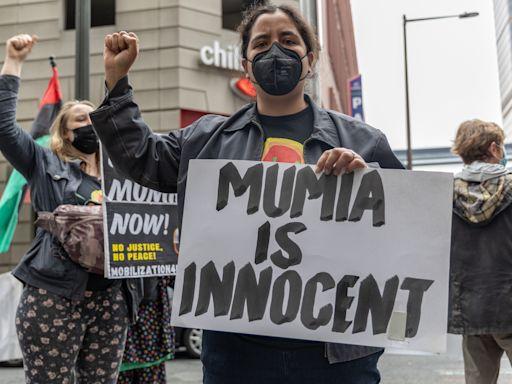
He has filed for a new trial based on recently discovered evidence: his prior trial was tainted by judicial bias, and police and prosecutorial misconduct that included withholding of evidence and bribing or coercing witnesses to lie
A judge will decide in mid-December if Mumia Abu-Jamal will receive a new trial.
Abu-Jamal’s lawyers, Judith Ritter and Samuel Spital, were in court on October 26 promoting a motion for a new trial based on new evidence that came to light in 2018 after several boxes of documents were found that were withheld during the trial, and which Ritter and Spital say suggest a tainted conviction.
Prosecutors for the case, however, claim that the new evidence was already heard by other courts. The Judge agreed, saying she intended to dismiss, but gave the defense and prosecution the next several weeks to respond and would make her ruling in mid-December.
Born Wesley Cook, Abu-Jamal is a former Black Panther and author of a dozen books, including the critically acclaimed Live from Death Row (1995), and a new trilogy on the U.S. empire.[1]
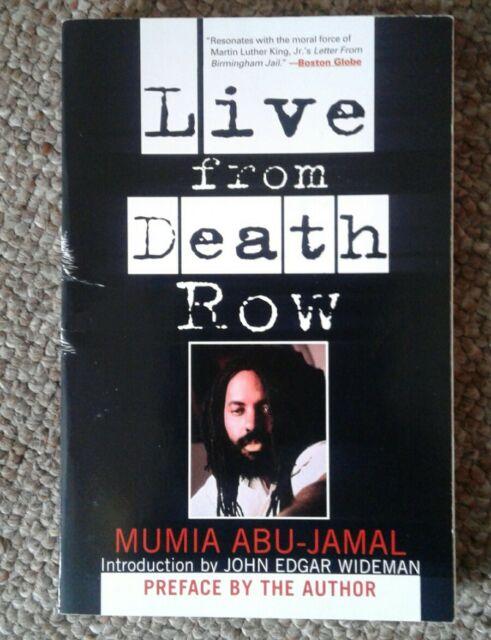
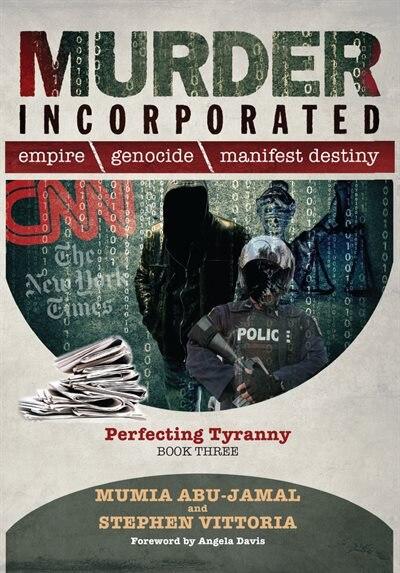
He is currently serving life in prison after being convicted in the 1981 death of police officer Daniel Faulkner.
Ritter and Spital say that the new documents that were uncovered in 2018 regarding Abu-Jamal’s case contain information that casts doubt on the state’s witnesses.
One of the documents is a handwritten letter sent from the state’s star witness at trial, Robert Chobert, to the prosecutor, Joseph McGill—who worked under future Governor Ed Rendell—that suggests a payoff.
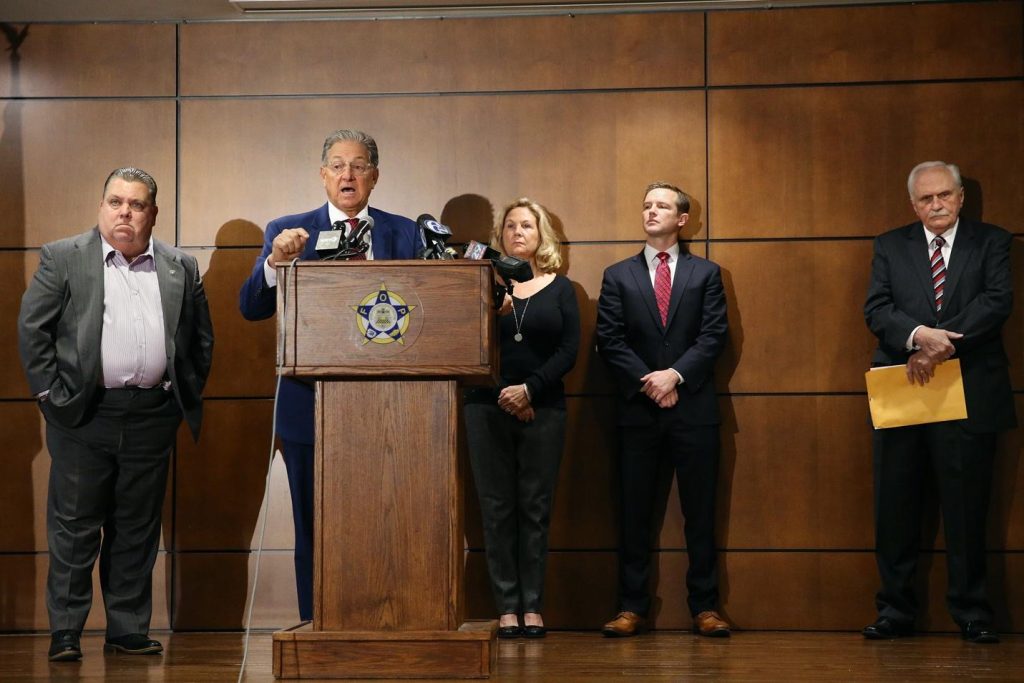
Chobert wrote: “I have been calling you to find out about the money own (sic) to me. Do you need me to sign anything. How long will it take to get it.”
Chobert was one of only two witnesses at the trial who claimed to have seen Abu-Jamal shoot Faulkner. No other evidence directly connected Abu-Jamal to the killing.
Abu-Jamal’s lawyers argue that the letter indicates that Chobert “understood there to be some prior agreement or understanding between himself and the prosecution, such that the prosecution ‘owed’ him money for his testimony.”
The state has disputed that interpretation, saying that Chobert asked for money to compensate himself for lost earnings after the trial had finished and that the prosecutor merely said it would “look into it.”
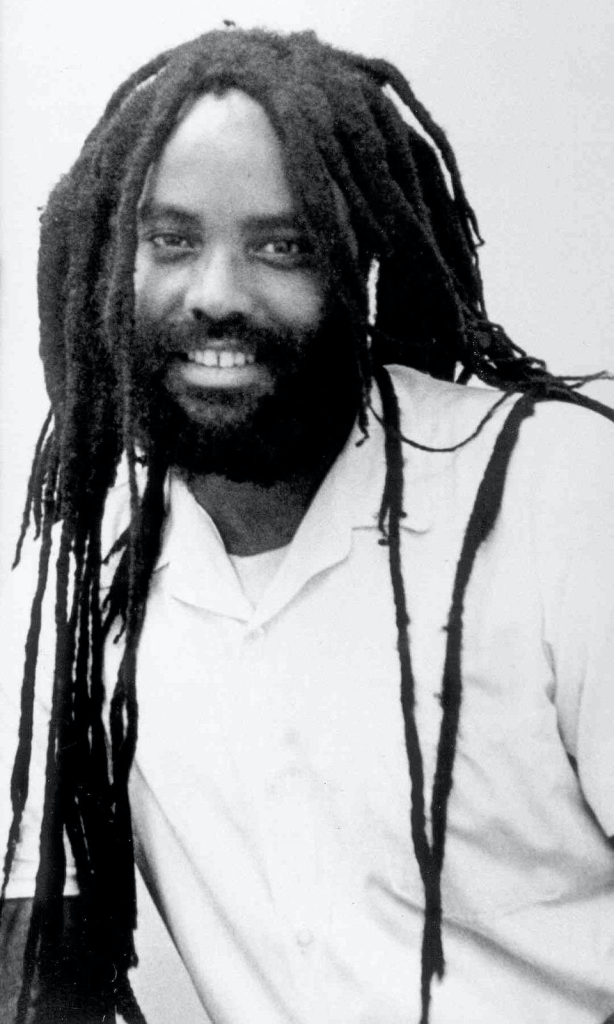
In a 1995 hearing, however, Chobert testified that he was offered a deal by the DA—if he retracted his claim that a shooter who did not resemble Mumia fled from the scene, the prosecution would reinstate his cab drivers license, which had been suspended.[2]
This gives weight to the view that he was blackmailed into giving false testimony through promise of monetary or other reward.
Fateful Encounter
Abu-Jamal’s fateful encounter with Faulkner occurred when Faulkner was arguing with and allegedly beating his brother, Billy Cook, with a flashlight during a traffic stop in the early morning hours of December 9, 1981. Abu-Jamal was himself shot in the alleged altercation with his gun found next to him by police officers who arrived on the scene.
As a cab driver in inner-city Philadelphia, Mumia stated his need to have a gun “or you may not return from my shift.”
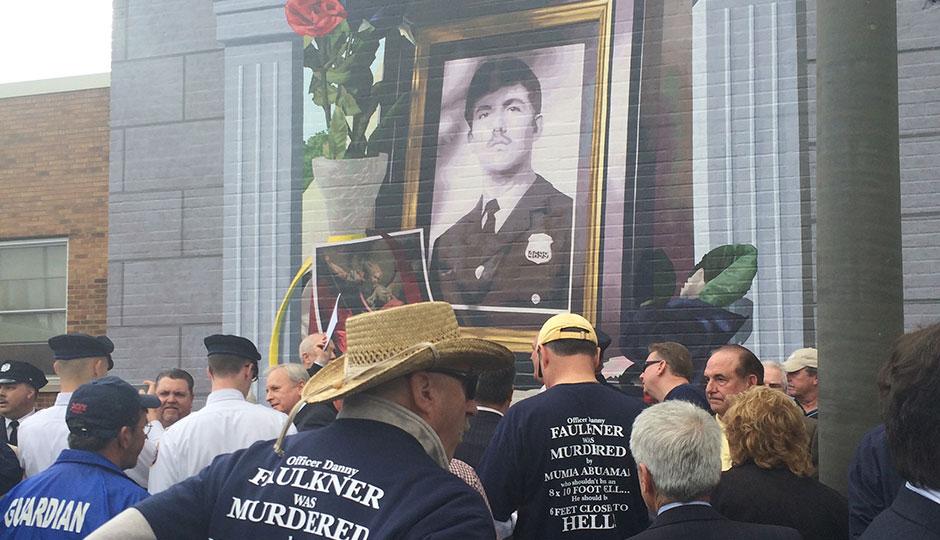
At the time, Mumia drove a taxi two nights a week to supplement his income as a radio journalist. He was a supporter of the MOVE organization against state repression, had been tracked by the FBI, and drew the ire of the Philadelphia Fraternal Order of Police and notoriously racist Police Commissioner and later Mayor, Frank Rizzo.
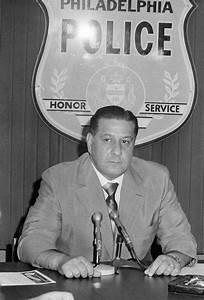
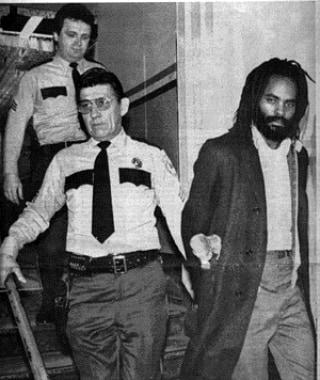
The facts that have emerged in Mumia’s case even before the latest bombshell point to his innocence.
The police never reported on their interview with three crime scene witnesses who stated that the passenger in Billy Cook’s VW—identified as Kenneth Freeman[3]—was the shooter, and the District Attorney did not call on another witness to testify at the trial, Robert Harkins, who said that Faulkner’s killer was heavier than him, which excluded Abu-Jamal who was thirty pounds lighter.

Another woman, Pamela Jenkins, the girlfriend of police officer Thomas Ryan, testified at a post-trial hearings that Ryan tried to make her falsely identify Mumia as the shooter at the original trial, even though Jenkins was not at the scene of the shooting.
Coercion of Prostitutes
Two of the other key prosecution witnesses against Abu-Jamal—Cynthia White and Veronica Jones—were prostitutes and therefore vulnerable to being coerced into giving false testimony through threats of imprisonment.
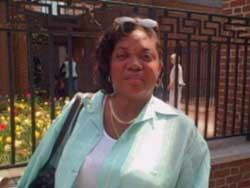
Jones later admitted to having committed perjury in order to avoid going to jail and being separated from her kids. White was actually half a block away at the time of the shooting and had asked others what had happened.[4]
The newly found documents include letters from the DA’s office to prosecutors involved in each of the five pending criminal cases against White, which reveal a concerted effort by Mr. McGill and several Philadelphia DA unit chiefs to bring Ms. White back from Massachusetts, secure an early trial date in order to expedite her release and ultimately allow her cases to be dismissed for lack of prosecution.
Such favorable treatment, Abu-Jamal’s lawyers suggest, was designed to make “life easier for her in exchange for her testimony against Abu-Jamal.”
More Anomalies
After Faulkner’s killing, the police never performed forensics tests that could connect Abu-Jamal’s gun—which he carried for personal protection—to the murder.
Abu-Jamal’s gun was a .38 caliber, but the bullets that killed Faulkner were .44 caliber according to the original medical examiner’s report.
Abu-Jamal’s hands were also never tested for gunshot residue, the crime scene was never properly cordoned off, and evidence from the crime scene was tampered with by police and then withheld from the defense during the trial.
In addition, much of the crime scene evidence contradicts the prosecutor’s story.
The prosecutor, for example, claimed that Jamal stood over Faulkner and struck him with one shot but missed with several others. However, these errant shots would have caused divots in the ground and destroyed chunks of cement, which a crime scene photo—taken by freelance photographer Pedro Polakoff—does not show.
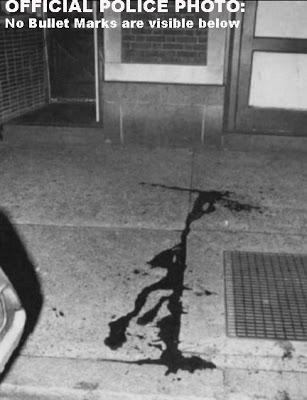
When Polakoff—who happened on the crime scene just after Faulkner’s shooting—tried to tell the D.A. what he had seen and provide him with his photos, he was rebuffed.
At the trial, a police officer, Gary Bell, and hospital security guard, Priscilla Durham, claimed that Abu-Jamal had bragged in the hospital about killing Faulkner and said he had wished the “motherfucker would die,” though the police officer who rode with him in the ambulance and guarded him during his treatment at the hospital, Gary Wakshul, had reported that “the negro male made no comment.”[5]
In 1999, Arnold Beverly claimed that he and an unnamed assailant, not Mumia Abu-Jamal, shot Daniel Faulkner as part of a contract killing because Faulkner was interfering with graft and payoffs to corrupt police.[6]
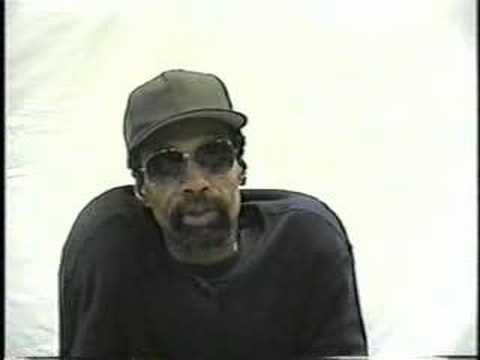
Other police officers were present at the time of the shooting and, Beverly says, they were there to protect him and help him escape. Mumia only came on the scene after and was shot not by Faulkner, but by another cop.
Grotesquely Unfair Trial
The judge, Albert Sabo (1920-2002) was known as “The hanging judge,” a “prosecutor in robes” and had sentenced to death more than twice the number of people than any other judge in the U.S.
According to official court documents, six former Philadelphia prosecutors swore that no accused could receive a fair trial in his court. A former court stenographer also said in an affidavit in 2001 that during Abu-Jamal’s trial, she overheard Sabo tell someone at the courthouse, “Yeah, and I am going to help them fry the nigger.”
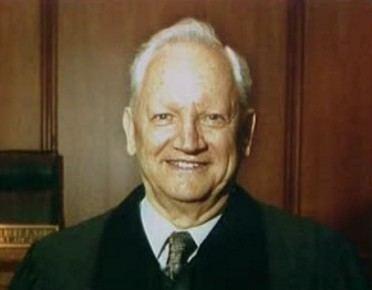
When Mumia’s court-appointed attorney, Anthony Jackson, objected to Mumia not being allowed to be present at Jackson’s questioning of certain police witnesses on the record, Sabo replied: “I don’t care about Mr. Jamal,” which seemed to sum up his attitude.
Stuart Taylor Jr. in the leading law journal American Lawyer, concluded that “Jamal’s trial was grotesquely unfair and his sentencing hearing clearly unconstitutional…Judge Sabo flaunted his bias, oozing partiality toward the prosecution.”
Handwritten Notes
The newly discovered boxes add yet more evidence to corroborate Taylor’s assessment. They include the handwritten notes of James McGill, which show that he placed a large letter “B” next to any prospective juror who was Black.
During jury selection, McGill struck 15 people from the pool—10 were Black and five non-Black. The prosecutor blocked 71% of all potential Black jurors from sitting on the final jury, compared with only 20 percent of all non-Black panelists. This violated a federal law that makes it illegal to strike potential members from the jury on the grounds of race.
The Fix Was in From Day One
Although the recently discovered evidence on which Mumia’s legal team is basing its application for a new trial certainly strengthens Mumia’s argument that he was railroaded by a biased judge in an unconstitutional trial, whose witnesses against him either retracted their original identification of him as the killer of officer Faulkner—or were bribed or coerced into lying by police interrogators—no additional evidence should have been needed to justify a new trial since the monumental unfairness of his prior trial and conviction have been shamefully obvious ever since Mumia was convicted over 40 years ago.
In other words, the fix was in from day one.
Although it is to be hoped that Mumia will be granted a new trial, that does not seem likely, given that he is appealing to the same biased and corrupt Pennsylvania judicial system that originally railroaded him.
So Mumia may sadly be fated to remain among the many wrongfully convicted Americans who die behind bars; hapless victims of judicial bias, police malpractice, prosecutorial misconduct, or all three.

-
At the outset of the trilogy, Mumia invokes the paintings of Thomas Cole, whose 19th century series on the course of empire depict stages of evolution from the “savage state” or “commencement of empire” when nature was still intact and natives undisturbed by Western colonization, through a phase of decadence, endless war, devastation, and self-destruction. ↑
-
Crime scene photos confirm that Chobert—whose license had been suspended because of two DUI’s—gave false testimony as he testified at the trial that his taxi was parked directly behind Faulkner’s car, but a crime scene photo shows a blank space and no taxi there; Chobert’s taxi was actually further away. ↑
-
The day after the killing, a kiosk run by Freeman and Billy Cook was burned down in a suspected police arson. Then, on the night in 1985 when police firebombed MOVE headquarters, Freeman’s body was found nude and gagged in an empty lot, his hands handcuffed behind his back. No police investigation was carried out into his obvious murder and the coroner listed his cause of death as a heart attack even though he was only 31 years old. ↑
-
A 2002 affidavit by former prostitute Yvette Williams described police coercion of Cynthia White. The affidavit reads: “I was in jail with Cynthia White in December of 1981 after Police Officer Daniel Faulkner was shot and killed. Cynthia White told me the police were making her lie and say she saw Mr. Jamal shoot Officer Faulkner when she really did not see who did it.” ↑
-
Wakshul never was allowed to testify at the trial. At the time, he was on vacation, and the judge denied the request to locate him for testimony on the grounds that it was too late in the trial. Wakshul though later said he took his vacation at home that year so he was actually available. ↑
-
An FBI investigation determined that Deputy Police Commissioner James Martin, who was in charge of all major investigations, including Faulkner’s death, was the ringleader of a vast extortion enterprise operating in City Center. ↑
CovertAction Magazine is made possible by subscriptions, orders and donations from readers like you.
Blow the Whistle on U.S. Imperialism
Click the whistle and donate
When you donate to CovertAction Magazine, you are supporting investigative journalism. Your contributions go directly to supporting the development, production, editing, and dissemination of the Magazine.
CovertAction Magazine does not receive corporate or government sponsorship. Yet, we hold a steadfast commitment to providing compensation for writers, editorial and technical support. Your support helps facilitate this compensation as well as increase the caliber of this work.
Please make a donation by clicking on the donate logo above and enter the amount and your credit or debit card information.
CovertAction Institute, Inc. (CAI) is a 501(c)(3) non-profit organization and your gift is tax-deductible for federal income purposes. CAI’s tax-exempt ID number is 87-2461683.
We sincerely thank you for your support.
Disclaimer: The contents of this article are the sole responsibility of the author(s). CovertAction Institute, Inc. (CAI), including its Board of Directors (BD), Editorial Board (EB), Advisory Board (AB), staff, volunteers and its projects (including CovertAction Magazine) are not responsible for any inaccurate or incorrect statement in this article. This article also does not necessarily represent the views the BD, the EB, the AB, staff, volunteers, or any members of its projects.
Differing viewpoints: CAM publishes articles with differing viewpoints in an effort to nurture vibrant debate and thoughtful critical analysis. Feel free to comment on the articles in the comment section and/or send your letters to the Editors, which we will publish in the Letters column.
Copyrighted Material: This web site may contain copyrighted material the use of which has not always been specifically authorized by the copyright owner. As a not-for-profit charitable organization incorporated in the State of New York, we are making such material available in an effort to advance the understanding of humanity’s problems and hopefully to help find solutions for those problems. We believe this constitutes a ‘fair use’ of any such copyrighted material as provided for in section 107 of the US Copyright Law. You can read more about ‘fair use’ and US Copyright Law at the Legal Information Institute of Cornell Law School.
Republishing: CovertAction Magazine (CAM) grants permission to cross-post CAM articles on not-for-profit community internet sites as long as the source is acknowledged together with a hyperlink to the original CovertAction Magazine article. Also, kindly let us know at info@CovertActionMagazine.com. For publication of CAM articles in print or other forms including commercial internet sites, contact: info@CovertActionMagazine.com.
By using this site, you agree to these terms above.
About the Author

Jeremy Kuzmarov holds a Ph.D. in American history from Brandeis University and has taught at numerous colleges across the United States. He is regularly sought out as an expert on U.S. history and politics for radio and TV programs and co-hosts a radio show on New York Public Radio and on Progressive Radio News Network called “Uncontrolled Opposition.”
He is Managing Editor of CovertAction Magazine and is the author of six books on U.S. foreign policy, including Obama’s Unending Wars (Clarity Press, 2019), The Russians Are Coming, Again, with John Marciano (Monthly Review Press, 2018), Warmonger. How Clinton’s Malign Foreign Policy Launched the U.S. Trajectory From Bush II to Biden (Clarity Press, 2023); and with Dan Kovalik, Syria: Anatomy of Regime Change (Baraka Books, 2025).
Besides these books, Kuzmarov has published hundreds of articles and contributed to numerous edited volumes, including one in the prestigious Oxford History of Counterinsurgency .
He can be reached at jkuzmarov2@gmail.com and found on substack here.


[…] addition, Yvette Williams, also a former sex worker, swore in a 2002 affidavit, “I was in jail with Cynthia White in December of 1981 after Police Officer Daniel Faulkner was […]
[…] addition, Yvette Williams, also a former sex worker, swore in a 2002 affidavit, “I was in jail with Cynthia White in December of 1981 after Police Officer Daniel Faulkner was […]
[…] New Hope For Mumia Abu-Jamal, by Jeremy Kuzmarov […]